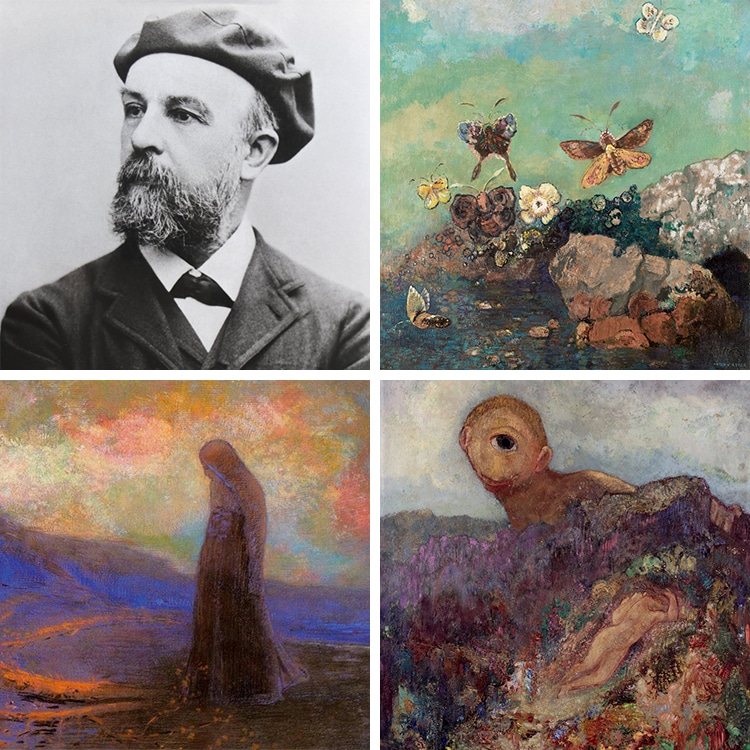
Late 19th-century France was an exciting time for avant-garde artists. While the best-known figures from this period can be grouped into the Impressionist and Post-Impressionist art movements, there are other creatives from this era who possessed unique and lasting aesthetics. One such person was the French artist Odilon Redon.
With an interest in depicting imaginary subject matter in a semi-realistic way, he is often associated with the Symbolist art movement—the style was prevalent in France at the time. Redon's keen use of color, dreamlike settings, and abstraction set him apart from many of his contemporaries. And while he is not as widely known as Monet or Van Gogh, he had a lasting impact on future art movements.
Here, we will learn more about Redon and the characteristics of his dreamlike art.
Who Was Odilon Redon?
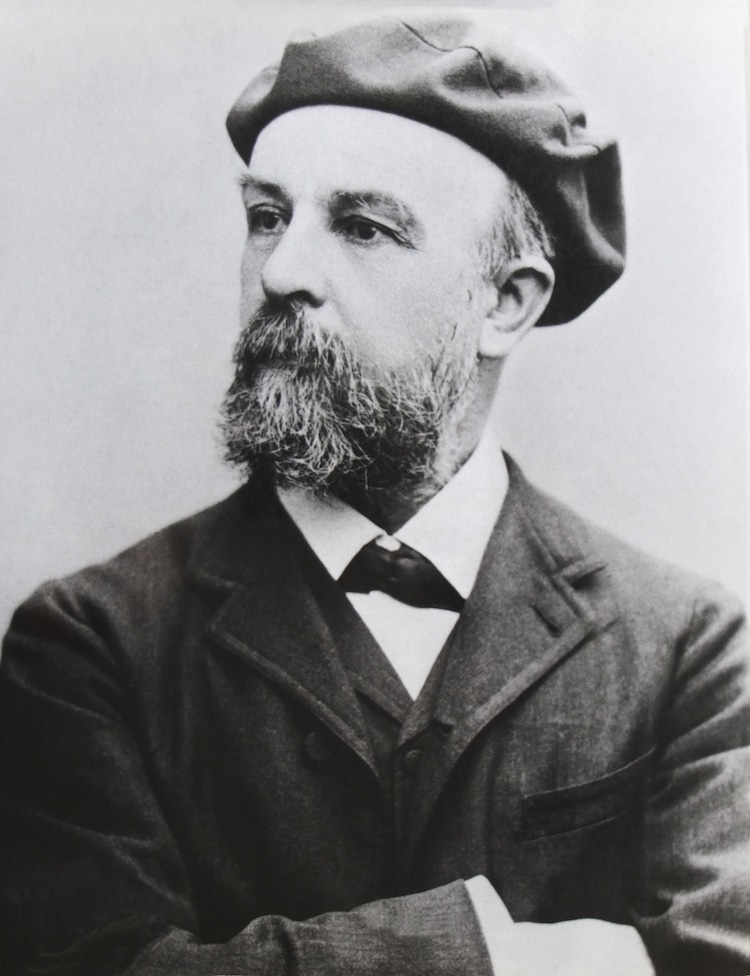
Photograph of Odilon Redon by Guy et Mockel, c. 1880 (Photo: Wikimedia Commons, Public domain)
Full Name | Bertrand Redon |
Born | April 20, 1840 (Bordeaux, France) |
Died | July 6, 1916 (Paris, France) |
Notable Artwork | The Cyclops |
Movement | Symbolism |
Odilon Redon (1840–1916) was an influential French artist known for his imaginative art in pastel, lithography, and oil.
Born in Bordeaux, France, to an affluent family, he displayed an aptitude for drawing at an early age. Redon's father wanted him to pursue architecture, but after he failed to pass the entrance exam to the École des Beaux-Arts, he began training as an artist. Due to the Franco-Prussian war, Redon's career did not blossom until the late 1800s when he began producing work in pastel and oils.
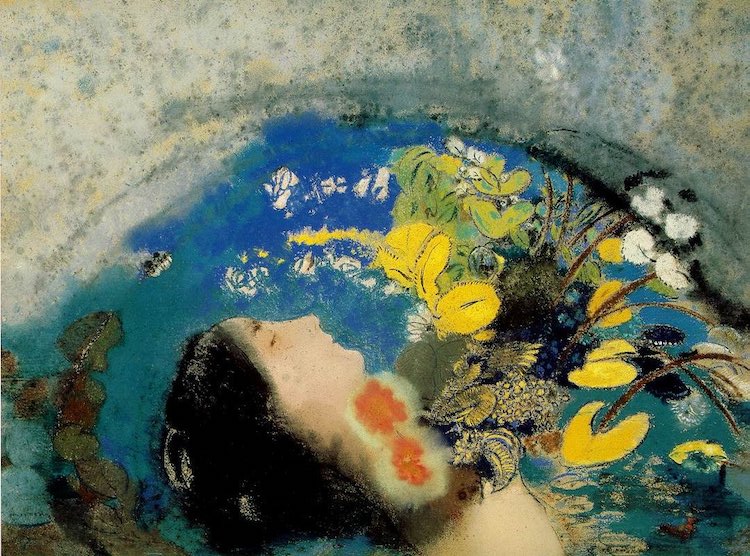
Odilon Redon, “Ophelia,” 1900–1905 (Photo: Wikimedia Commons, Public domain)
Although he was contemporary to the Impressionists and Post-Impressionists, he rejected both movements. And while Redon exhibited with the group called Les Nabis in 1899 and shared some common interests with them, he was not a part of their style either. His oeuvre is associated with the Symbolist movement, which is typified by an interest in imbuing art with ambiguous metaphors and themes of romance, morbidity, and the occult.
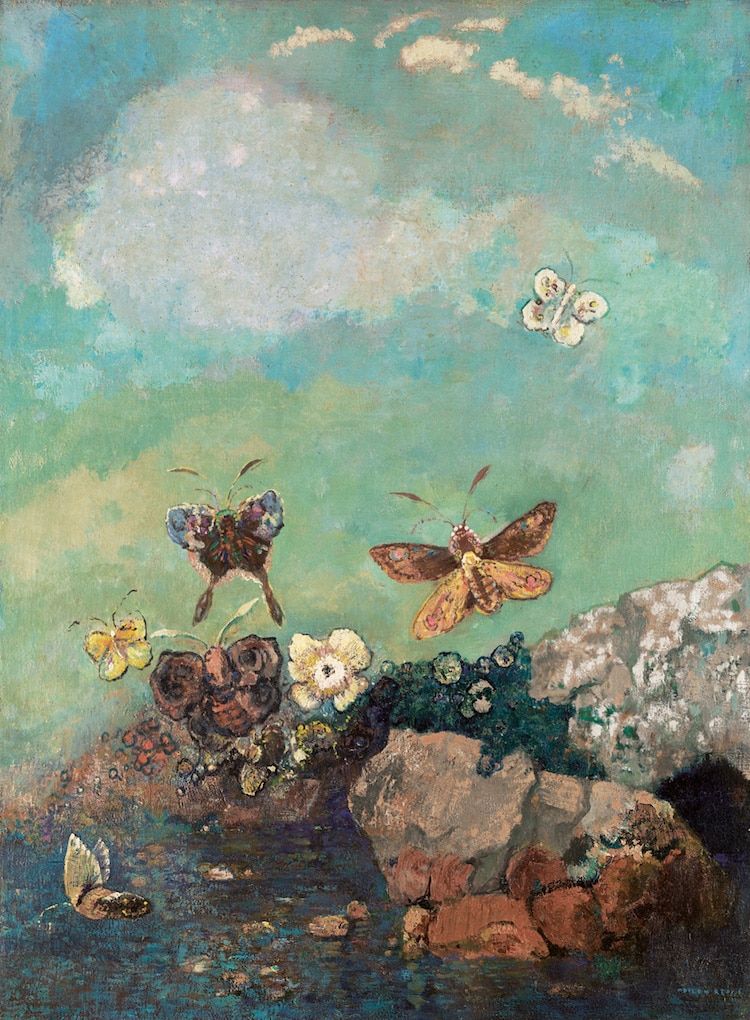
Odilon Redon, “Butterflies,” c. 1910 (Photo: Wikimedia Commons, Public domain)
Characteristics of Odilon Redon's Art
Imaginative Subject Matter
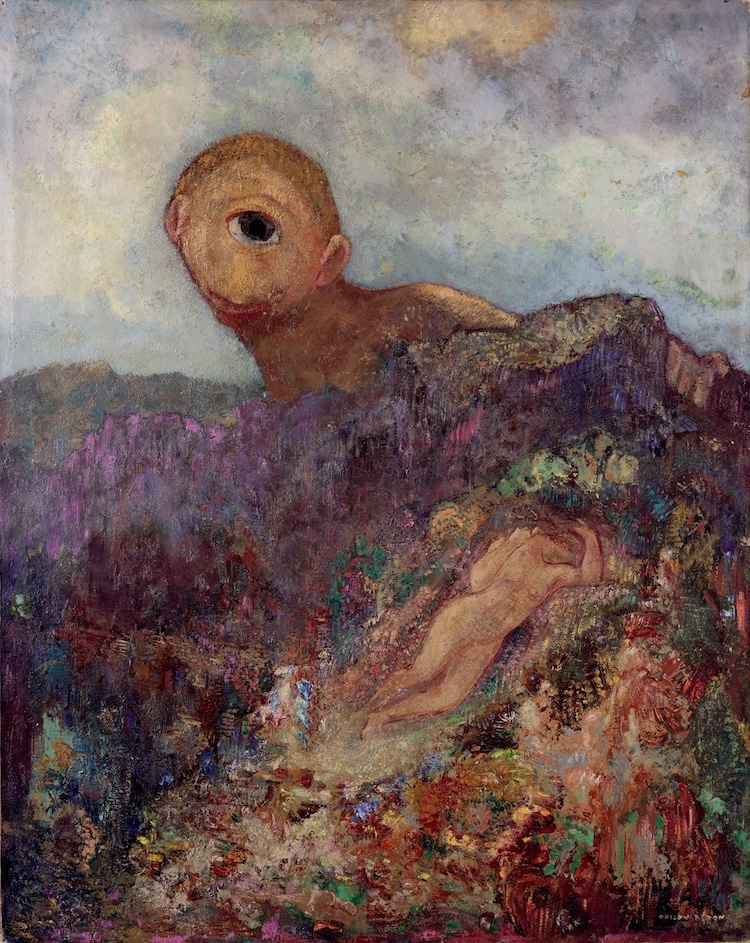
Odilon Redon, “The Cyclops,” c. 1914 (Photo: Wikimedia Commons, Public domain)
Perhaps most notable of Redon's artwork is his imaginative subject matter. Instead of drawing inspiration from what he saw, Redon preferred to paint images from his dreams, nightmares, and stories from mythology. This resulted in drawings and paintings with a tenuous grasp on realism, and a preferred emphasis on emotion, color, and atmosphere.
Redon explains his process in his journal: “I have often, as an exercise and as a sustenance, painted before an object down to the smallest accidents of its visual appearance; but the day left me sad and with an unsatiated thirst. The next day I let the other source run, that of imagination, through the recollection of the forms and I was then reassured and appeased.”
Vibrant Color Palette
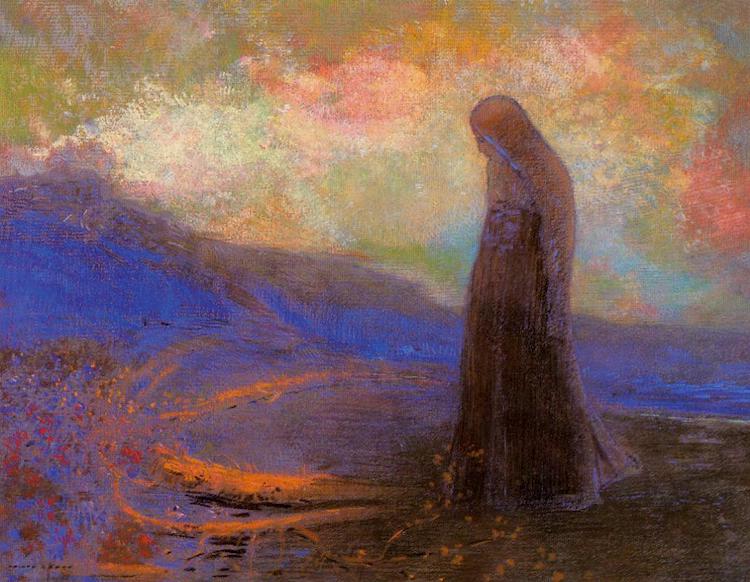
Odilon Redon, “Reflection,” c. 1900–1905 (Photo: Wikimedia Commons, Public domain)
Redon utilized a unique color palette in his art. The unusual combination of faded pastel tones and acrid hues led to compositions that were overall very vibrant to the eye. Additionally, his color choices were not usually intended to be naturalistic choices, and actually enhanced the otherworldliness of his unusual pieces.
Flowers
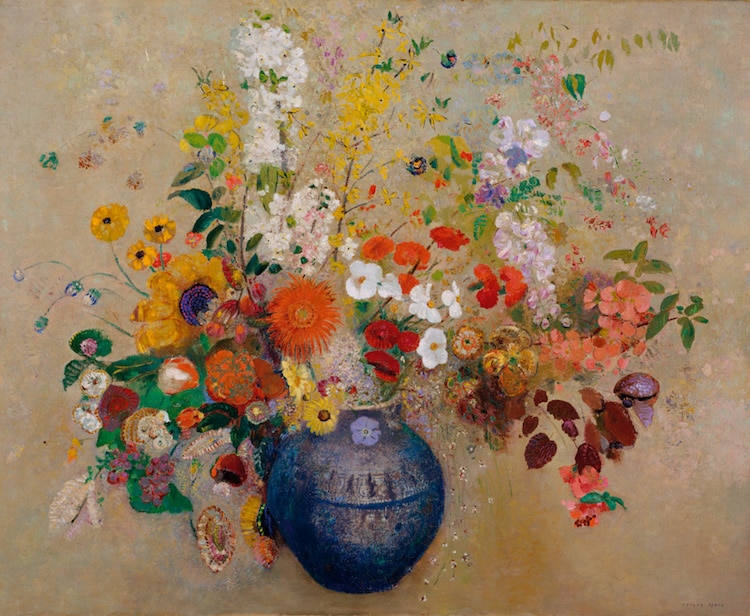
Odilon Redon, “Flowers,” 1909 (Photo: Wikimedia Commons, Public domain)
In regards to recurring motifs, flowers were among his most popular. Not only did he create numerous still lifes of floral arrangements, but he also incorporated blooms into his pastel drawings, prints, and paintings as decorative motifs to enhance the image.
Japonisme
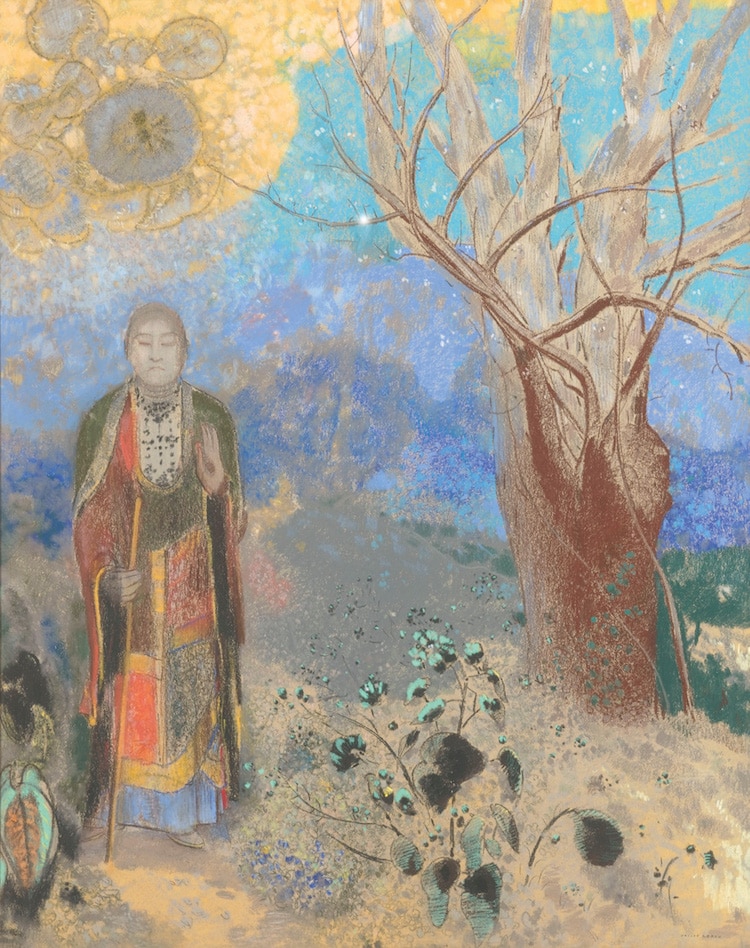
Odilon Redon, “The Buddha,” c. 1906–1907 (Photo: Wikimedia Commons, Public domain)
Like many artists of the late 19th century and early 20th century, Redon was deeply inspired by Japanese art in a phenomenon called Japonisme. The influence can be seen in the references to Buddhism, as well as some of the natural motifs, such as trees, and plants that recall the forms scene in ukiyo-e, or Japanese woodblock prints.
Legacy

Odilon Redon, “Portrait of Violette Heymann,” 1910 (Photo: Wikimedia Commons, Public domain)
Although not as widely known as some of his contemporaries, Redon was a significant figure in art history. During his lifetime, his unusual use of color was praised by French artist Henri Matisse. Redon also has an important influence on later art styles, in particular, Dadaism and Surrealism, the participants of which were drawn to his naturalist depictions of the imaginary.
Related Articles:
Let’s Get Metaphysical: Learn About Giorgio de Chirico, the Painter Behind the Art Movement
How Realist Painter Jean-François Millet Inspired the Work of Vincent van Gogh
How Female Painter Mary Cassatt Became an Important Impressionist Figure






















































































